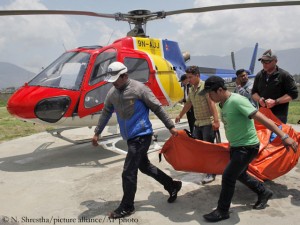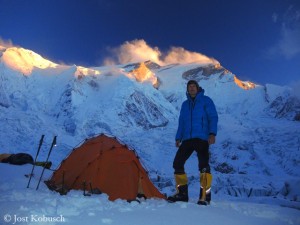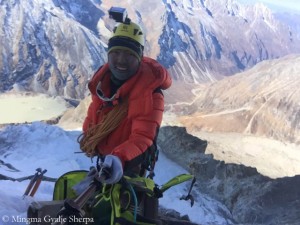Recovering the bodies on Everest: Difficult and dangerous
More than 400 summit successes, five deaths. This is so far the balance of this spring’s climbing season on Mount Everest, which is slowly but surely coming to an end. The two Indian climbers who had been missing for nearly a week with a probability bordering on certainty are dead. A Sherpa rescue team discovered the body of Paresh Chandra Nath above South Col. Rising wind prevented the search for the second missing, Gautam Ghosh. The chance of finding him still alive is virtually nil. The dead bodies of Dutchman Eric Arnold and Australian Maria Strydom have been meanwhile transferred by helicopter to Kathmandu. The corpse of Indian Subhash Pal, who had also passed away during summit attempt, should be brought today to Camp 2, to be flown out from there subsequently.
“Very slowly”
Recovering the body at an altitude of about 8,000 meters is complex and not without risk for the rescue team, said expedition leader Arnold Coster, who belonged to the team that brought Eric Arnold’s body down from South Col. According to Coster, six climbers were needed, two in front, two in the middle, two at the back: “We were moving very slowly. It took us almost 24 hours to bring down his body to a height of about 6,200 meters.” 36-year-old Eric Arnold had become increasingly weaker on his way back from summit and finally had died in Camp 4 at South Col.
20 hours without oxygen
Coster informed that 34-year-old Maria Strydom had abandoned her summit attempt near Everest South Summit at 8,750 meters, about a hundred meters below the main summit, because she had felt bad. Her husband Robert Gropel and some Sherpas had managed to bring Maria down to South Col. The next morning, on descent, the Australian had collapsed and died in Robert’s arms. “It was a superhuman effort, she was without oxygen for 20 hours”, said Gropel in Kathmandu in an interview with television channel ABC. The reporter digs deeper: Why was she without oxygen for that long? “Because of the length of time it took her, and took us to get her down, and it ran out.”









